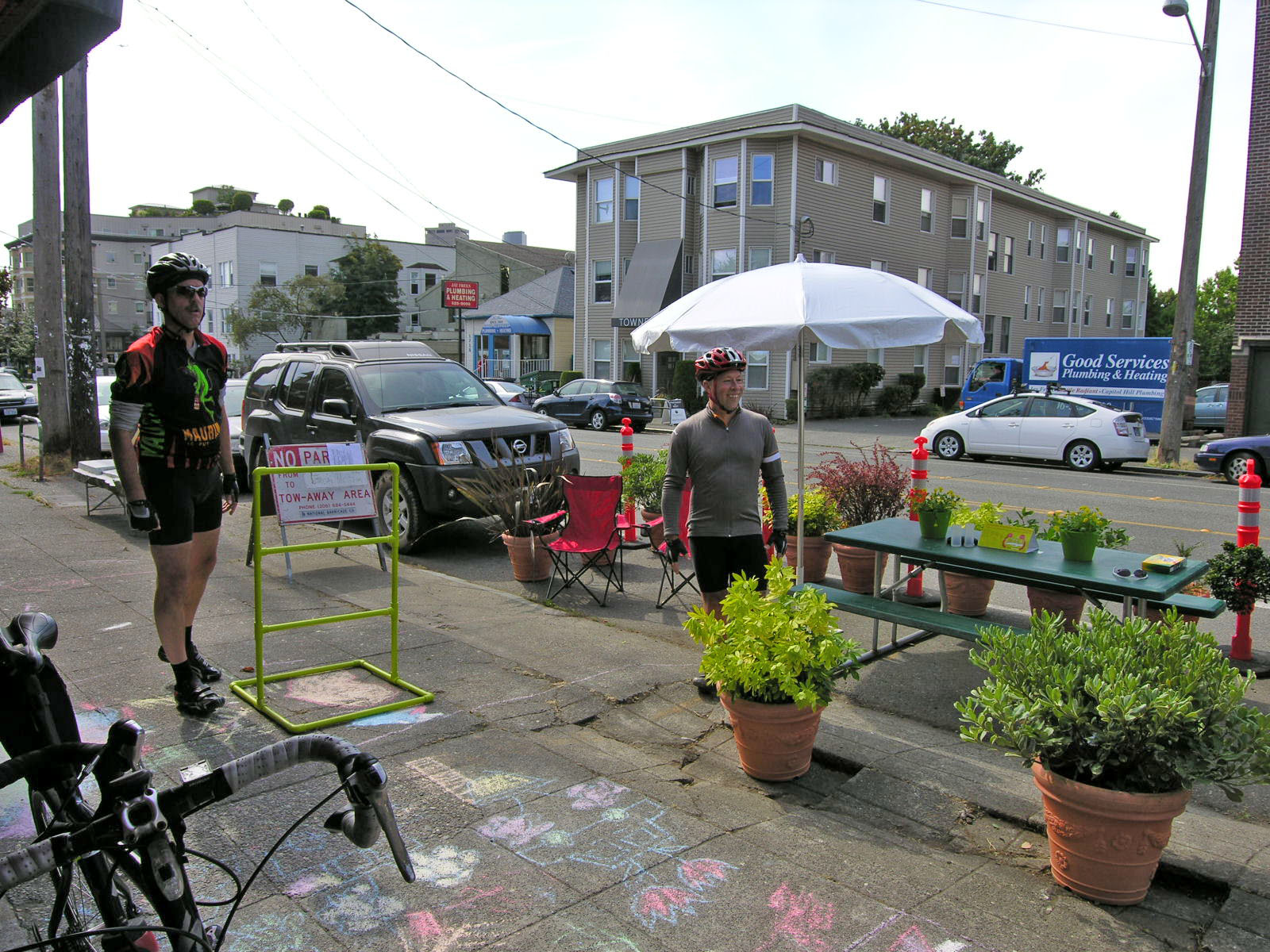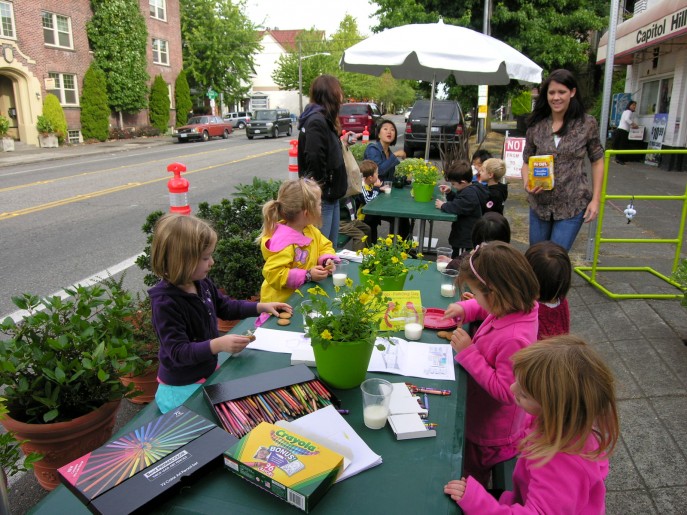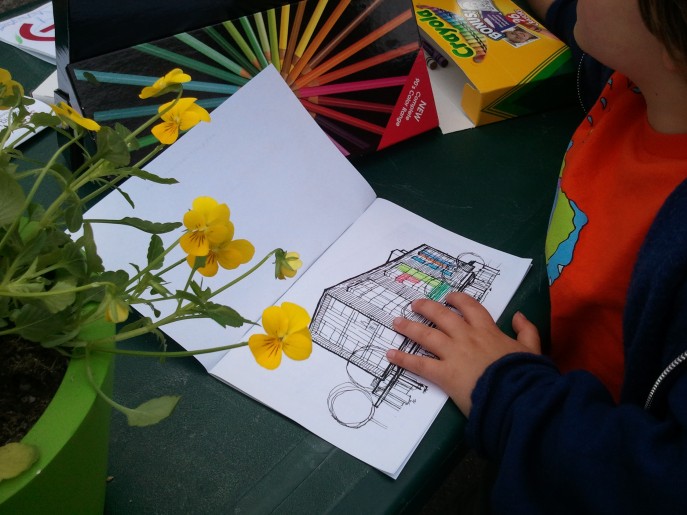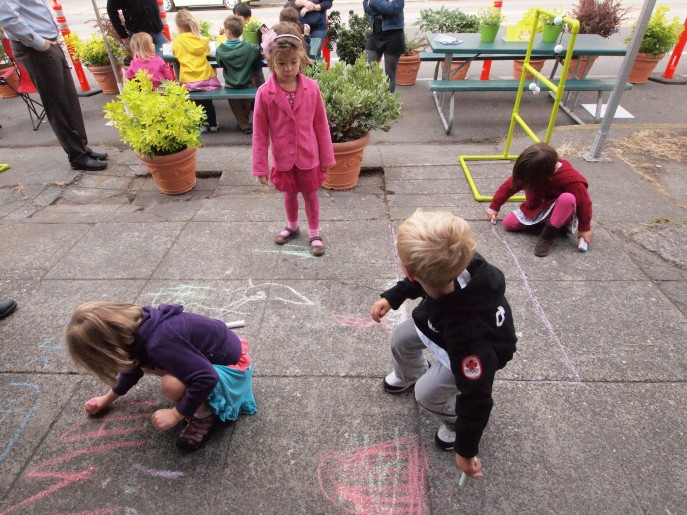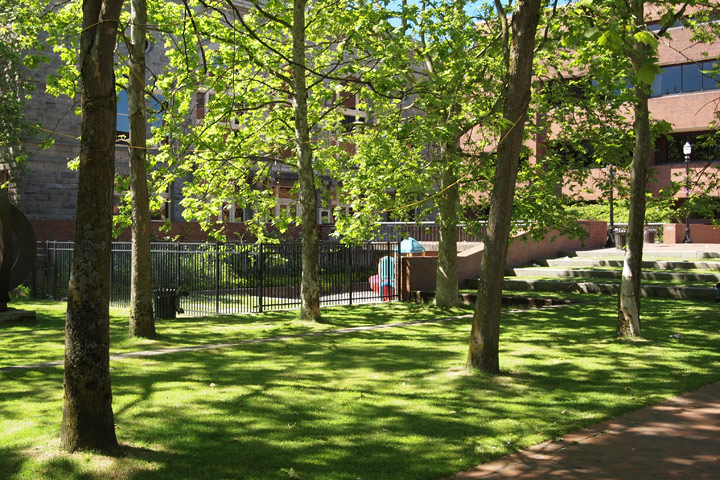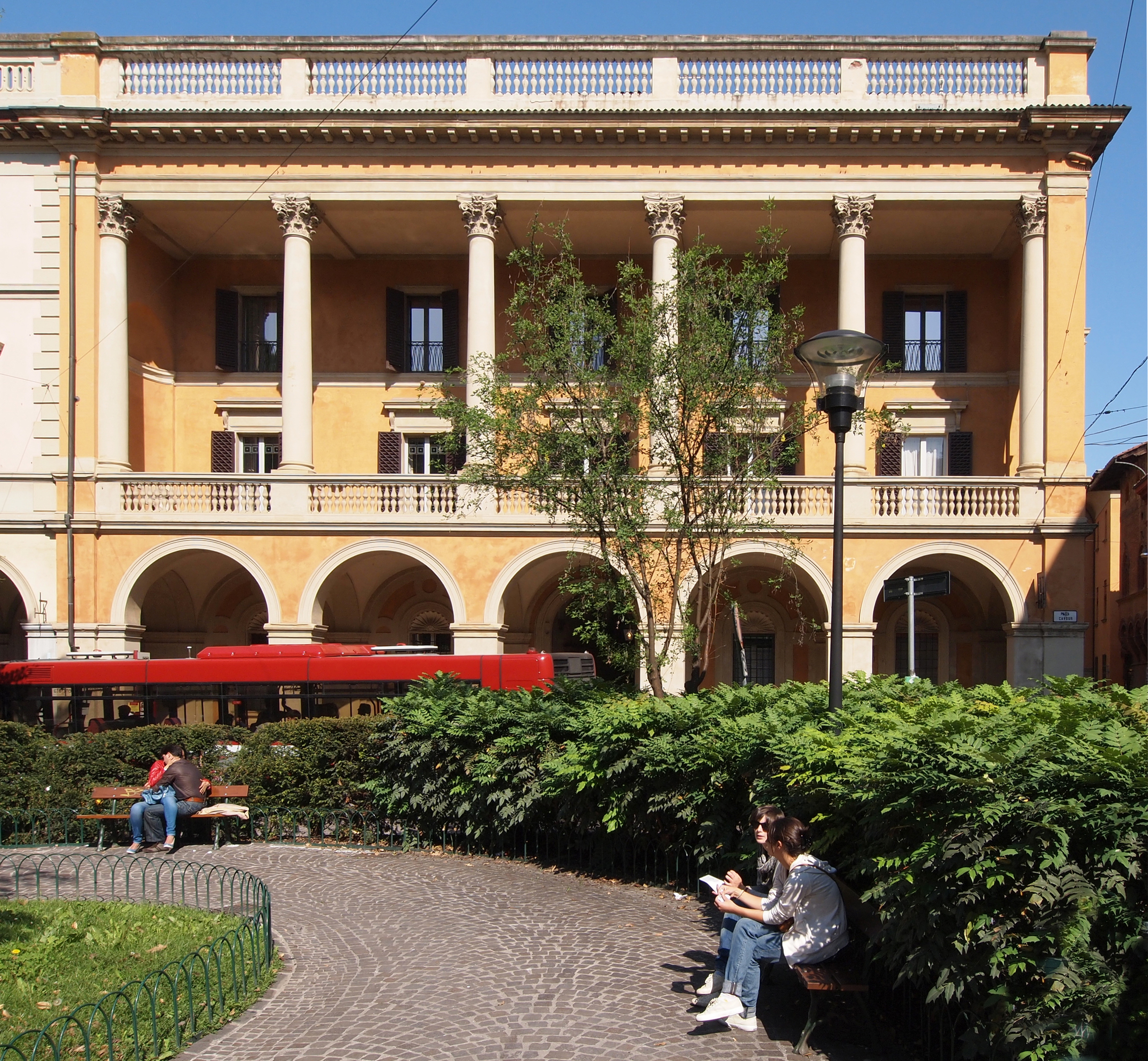Ferrara was the second city visited on our tour of Emilia Romagna, but only in sequential order, as its qualities are second to none. A city of 130,000, it is substantially larger than Mantua, and exhibits the extra layers of complexity one envisions accompanying larger size. The Este family governed Ferrara's rise to prominence, which lasted from the 13th through the 18th centuries. Like the other city-states visited, the ruling family's patronage attracted great artists. Imagine say 5th Avenue in New York (old money), combined with the Village or Williamsburg (the newly minted, of course, excluded); or, the patrons living (often housing) the artists they employ, having them at their disposal for a fresco here, a marble bust there. Perhaps some lines of Latin verse? Such a scenario would be difficult to reconstruct today, for the intimate connections between artisan and benefactor are of a different nature, as art today is more-often-than-not seen as critical lens through which to view the elite, not one as a means to legitimize their regime. Suffice it to say that working for the man was seen as a good gig, not something one should shun, and this association is perhaps one factor that lead to urban environments of remarkable quality, even those in a compact package.
[caption id="attachment_1815" align="alignnone" width="700" caption="Ferrara Night Scene"] [/caption]
[/caption]
Unlike the near-future regimes of say, France, the rulers of the Italian city states-drew a closer association between themselves and the cities they inhabited. The state was them, it was true, but the state was of a far more manageable size, perhaps another attribute leading to artistic fruition. When France's Louis XIV wanted a new home, he abandoned the Louvre in Paris, and built his new palace 30 miles outside of Paris at his father's (Louis XIII's) hunting lodge at Versailles, as distant from the poor (that his oppressive rule helped to galvanize, to the great detriment of his grandson, Louis Seize) as possible. He purposefully abandoned the city, and his court (and the artistic trappings of courtly life) joined him. While the Italian dukes did have country estates (as noted in the Mantua post), to my recollection they were more weekend retreats -- not permanent escapes -- as was Versailles or even the Hapsburg's Schoenbrun. Italian dukes were firmly planted in their cities, and they wanted their cities to be just right, as in evidence by the fine buildings they (and their courtiers) commissioned, and the vast art collections their urban domiciles housed (not unlike Henry Clay Frick 400 years later?). Although far from what one would call enlightened or democratic rule, this close association between the ruler and the ruled was a magnet to any artisan desiring both recognition and livelihood.
[caption id="attachment_1823" align="alignnone" width="700" caption="Castello Estanse"] [/caption]
[/caption]
In Ferrara the hierarchy of ruler to ruled is clearly displayed, and was a key determinant in the city's urban form. Dominating the center of Ferrara is the Este's early domicile, the Castello Estense, whose origins date to the late 14th century. It is easy to imagine the castle being surrounded by a more rural landscape, one that would eventually transform into the city. The Castello is a fortress, and does not project the refined tastes one associates with palazzi built by the Medicis in Florence, or even the Estes' future palazzo down the street. Upon reflection, the castello's more fortified appearance makes sense: cities were reestablishing themselves as the centers of society for the first time since the Roman Empire, and they were still pretty rough places to live. That roughness was reflected in the lack of urbanity of both the rulers and their architects, as the rules of decorum governing the arts were still nascent, still in development. Rural precedents were all that was available -- where castles dominated -- not palazzi. The evolution of the palazzo in its familiar form resulted from architects (and patrons) crafting a new typology, one that reflected a new type of urban living and governance. Pictured below is the successor palazzo to the castello pictured above, and built 100 years later. A few blocks down from the castello, it is squarely within the typology associated with Italian palazzi, (and its derivative French Hotel): a simple box, with regularly arranged yet minimum openings, arranged around a central courtyard, and accessed through a quite large, gated archway. A plan that is remarkably similar, actually, to that of the castello, yet this time reflecting a greater expectation from the owner that their domicile express not only fortitude, but design savvy as well. Savvy displayed by the very artisans a growing city and patronage was available to groom.
[caption id="attachment_1816" align="alignnone" width="700" caption="Piazza Diamante"] [/caption]
[/caption]
[caption id="attachment_1817" align="alignnone" width="700" caption="Piazza Diamante Detail"] [/caption]
[/caption]
Above is a detail from the Diamante, and it reveals its spectacular stone facing (no plaster here!), where one can see the thousands (!) of diamond-shaped profiles cut into the stone blocks. The diamond was the symbol of the Este family, and formed the motif for the building's cladding. The diamond facing is imparts a fine grain the facade, and foreshadows (by about 500 years) the current fetish many architects have with finely delineated building surfaces, such as the Future System's Selfridges building in Birmingham, England. In all honesty, I had never heard of the Palazzo Diamante, and after seeing it, why not? It is spectacular! It currently houses, needless to say, a superb art collection.
[caption id="attachment_1792" align="alignnone" width="700" caption="Birmingham Selfridges Building (Wikipedia)"] [/caption]
[/caption]
The Diamante is just on the edge of the old town's transition into the new. Relative terms, because the transition occurred in the 16th century. Planning wise, the transition meant going from the crooked, organic streets that were laid out (or better put, evolved) during the Middle Ages and Renaissance, to stick straight streets, and what was to become the planning norm in both Europe and North America. The transition to the gridiron revealed a streetscape that reminded me more of colonial America than Italy, in that the buildings were old, yet arranged in a highly regular, rectilinear manner. Quite a nice cross-section in time. But as in virtually any European city, I confess it was the medieval streets that held the greatest mystery, charm, and beauty. It is, in fact, the clearly demarcated evolution from medieval to modern urban planning that led to Ferrara's recent designation as a UNESCO World Heritage Site.
[caption id="attachment_1818" align="alignnone" width="700" caption="Post Renaissance Straight Street"] [/caption]
[/caption]
[caption id="attachment_1739" align="alignnone" width="700" caption="A Typical, Organic Street"] [/caption]
[/caption]
Ferrara is resplendent with the twisty and curvy, and there is a particular street -- Via Volte -- that combines the labyrinth streetscape with a series of archways and bridges that is unlike any street we had before seen. Adding to its formal singularity was that is contained little retail or other public destinations, making it exceptionally quite, even sublime. Streets like the one pictured below occurred for block after block after block, with the shade to light rhythm afforded by the bridging elements creating a soothing progression.
[caption id="attachment_1825" align="alignnone" width="700" caption="Via Volte"] [/caption]
[/caption]
[caption id="attachment_1826" align="alignnone" width="700" caption="Bicycle, Via Volte"] [/caption]
[/caption]
Contrasting the above mysterious mazes, are Ferrara’s almost complete series of city walls, which date back to the 13 and 14th centuries. Such walls were common place amongst any city of size throughout Europe, but most have long been torn down or simply returned to the landscape, making Ferrara's intact walls a treasure to the community. Walls were of course defensive in nature, but formed an even more important function: that of regulating commerce. The old guild systems and the city's rulers held a tight grip on who was permitted to do business within the city, a grip they zealously guarded. During the reigns of the guilds (and for that matter, until quite recently), the main revenue for cities (and countries) was taxing goods that originated from outside, with walls forming clear and secure venues to extract specie from foreign merchants. Today, the remnants of the walls still demarcate many of the entrances into the city, albeit without gates or tariffs. The tops of the walls, and the frontage alongside them, has been turned into landscaped parks with stunning allays of trees forming regal processions. As found in so much of Ferrara, atop the walls are great cycling paths, boosting Ferrara’s reputation as Italy's premier cycling town.
[caption id="attachment_1736" align="alignnone" width="700" caption="Atop the City's Ancient Walls"] [/caption]
[/caption]
Returning back to the central town, one comes across some familiar players: piazza, duomo, and shopping street (local retail, rest assured) but with a Ferrara twist: the hybrid Duomo/piazza/market place. I suppose it is not that much of a hybrid, as the typology of the Duomo is founded upon that of the basilica, whose origins were the Roman market place. In Ferrara the evolution has come full circle, as pictured below. The left (sumptuous facade) of the Duomo, is well, duomo-like, complete with religious iconography. Made of marble, its finely carved details and rich, pink hues lend majesty to it presence. Note that efforts for cladding the remainder of the Duomo were suspended so that the campanile (far right) could be completed. Between the two, however, funds seem to have run short, and the bones of the Duomo are bare for all to see: red brick. Nothing unique (or unattractive) here, as many such edifices remain incomplete despite their great age. What is intriguing about this incompleteness is that it fostered a change of use as well, from the sacred to the profane; or, form the house of God to those of commerce (yes, that profane), as borne out by the market stalls/sheds unceremoniously attached to the side of the Duomo.
[caption id="attachment_1827" align="alignnone" width="700" caption="Ferrara Duomo Main Elevation"] [/caption]
[/caption]
[caption id="attachment_1843" align="alignnone" width="700" caption="Duomo Market Stall Elevation"] [/caption]
[/caption]
Beyond and to the left (in the above photo) is one of the towers of the Castello. Again, secular and sacred authority sharing and defining the same, centrally located piazza. Pictured below, and on the opposite facade of the Duomo to the market stalls, is perhaps one of the most successful - yet elusive - public space topologies one could hope for, as I suspect it was created with no forethought whatsoever. It revealed itself while we were enjoying some wine at what is claimed to be Europe's oldest bar (circa 1300). As day fell to evening, we witnessed the gradual, casual, yet purposeful utilization of the low wall at the base of the Duomo as a meeting place, whose seating ledge transformed an otherwise blank wall into a prime gathering place. The photo below was taken just as we took our seats -- within an hour so many people had congregated about it that my photos were unable to clearly depict its architectural setting. The alley formed between the Duomo and the wine bar was barely 20 feet wide, and as long as the market stalls in the above photo. Sufficient foot traffic, a wall at just the right height, intimate enclosure, and the assurance of an audience were the key ingredients to ensuring this unintended meeting place its success.
[caption id="attachment_1744" align="alignnone" width="700" caption="Seating Wall along the Duomo"] [/caption]
[/caption]
As much of a success as this unintentional, remainder space was, an intentional space was even more so, as bore out by its very active uses. Behind the arched-portal pictured below, was a courtyard space the housed the most visually exciting happenings during our all too brief stay in Ferrara. For consecutive evenings the courtyard hosted the practice of flag-teams. The participants appeared to be of high school age, with coaching from parents. For what future pageant they were practicing, I could only speculate, and it did not matter anyway, for the event was a joy to behold. The venue for the revelry was a large, flat, courtyard, enclosed by buildings perhaps 4 to 5 stories high. An exterior stair alongside one of the buildings provided a great prospect from which to witness the events. There were no shops along the perimeter, no restaurants, no cafes. Just a sufficiently large, unadorned, level, and enclosed public space. A simple space to house spectacular events.
[caption id="attachment_1740" align="alignnone" width="700" caption="Entry Portal into the Courtyard of Flags . . ."] [/caption]
[/caption]
[caption id="attachment_1733" align="alignnone" width="700" caption="Flag Practice"] [/caption]
[/caption]
Taken as an ensemble, the Italians have created the world's most beautiful cities, in all imaginable sizes. From large, to medium. to small, the cities were created by a people with an unmatched skill at designing, nurturing, and -- most importantly of all -- creatively using the public realm. Be they unintentional spaces, those paying homage to the powers that be, or spaces repurposed from uses far removed from their original intent, theirs is a culture that knows better than perhaps any how to create places to share and celebrate public life.
Next: Bologna, the City of Arcades!
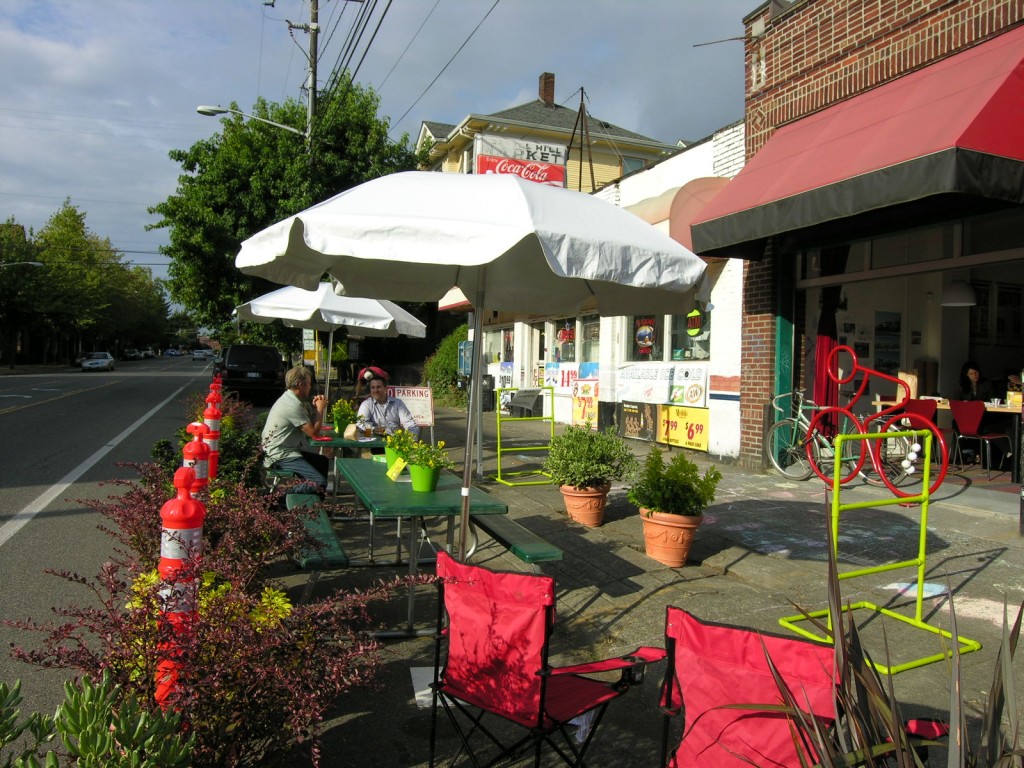 National Park(ing) day in front of the office of Schemata Workshop was a great success! Toddlers from a nearby daycare brought a great energy early on in the day, leaving playful sidewalk chalk artwork in their wake (not to mention the extra cookies from their snacktime, which powered the staff through the morning work).
National Park(ing) day in front of the office of Schemata Workshop was a great success! Toddlers from a nearby daycare brought a great energy early on in the day, leaving playful sidewalk chalk artwork in their wake (not to mention the extra cookies from their snacktime, which powered the staff through the morning work).
